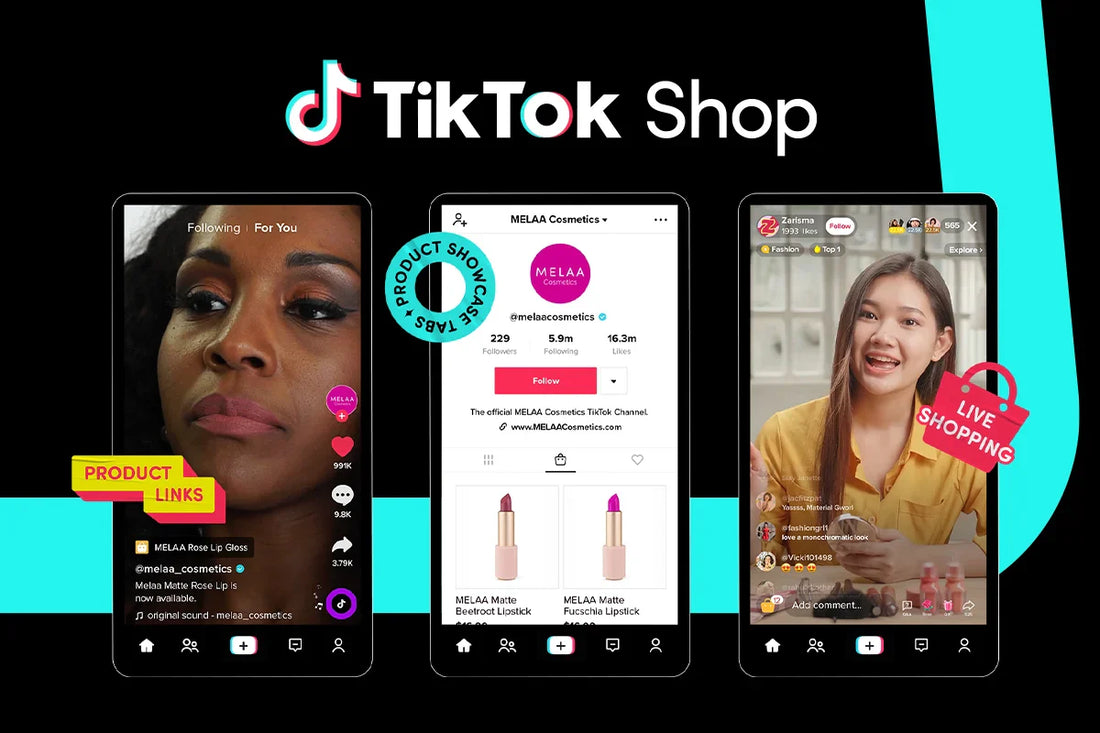
TikTok Shop Is Going To Be The Largest E com Platform in 2026?
Share
TikTok Shop’s Social Commerce Takeover: The Numbers, Challenges, and Future Trends
The social commerce landscape has never been more dynamic, and TikTok Shop is at the center of its transformation. With US social commerce sales reaching $71.62 billion in 2024—a 26% increase year-over-year—TikTok's ambitious push into ecommerce is clearly paying off. But what does this mean for brands, shoppers, and the future of online retail?
TikTok Shop: The Catalyst for Social Commerce Growth
TikTok Shop has rapidly evolved into the most talked-about social commerce platform, driving unprecedented engagement and sales. A few key factors have fueled its dominance in 2024:
-
Gen Z Shoppers Leading the Charge: Younger consumers are embracing TikTok’s seamless in-app shopping experience, where entertainment and purchasing are intertwined.
-
Live Shopping Boom: Strategic investments in live shopping have increased consumer engagement and encouraged impulse purchases.
-
Competitive Promotions: TikTok Shop strategically aligned its major discount events with Amazon Prime Days in July and October, capitalizing on heightened consumer spending periods.
-
Massive GMV Growth: TikTok Shop is on track to hit $17.5 billion in gross merchandise volume (GMV) in the US this year, with monthly sales surpassing $1 billion since July.
Why Are Consumers Hooked?
TikTok’s social commerce success stems from a unique blend of affordability, discoverability, and engaging content. Nearly half (49.7%) of TikTok social shoppers purchase from the platform at least once a month—more frequently than on Facebook, Instagram, or Pinterest. The combination of short-form video, influencer-driven marketing, and AI-powered recommendations fuels a shopping experience that feels organic rather than forced.
Potential Roadblocks to Continued Growth
Despite TikTok’s meteoric rise in ecommerce, several factors could slow its trajectory:
1. The Looming Ban Threat
TikTok’s future in the US remains uncertain, with potential regulatory actions posing a risk to its long-term ecommerce ambitions. While political shifts may temporarily delay a ban, any disruption to the platform’s operations could significantly impact social commerce growth.
2. Trust Issues & Counterfeit Concerns
Consumer trust remains a major hurdle for social commerce as a whole. A significant 53% of US consumers distrust products sold via social media, largely due to counterfeit items, misleading advertisements, and poor customer experiences. TikTok Shop’s early struggles with fake goods underscore this challenge.
3. Preference for Traditional Retailer Websites
Even as social commerce grows, three-quarters of consumers still prefer purchasing directly from retailer websites after discovering products on social platforms. Concerns over payment security and return policies often push shoppers to complete transactions elsewhere.
What’s Next for Social Commerce?
Social commerce will continue to expand, with projected sales reaching $85.58 billion in 2025 and surpassing $100 billion in 2026. However, platforms must address consumer trust issues to sustain this momentum. Here’s what we can expect:
-
More Partnerships with Established Retailers: Social platforms, including TikTok, Meta, and Pinterest, are increasingly collaborating with Amazon to streamline transactions and leverage consumer trust in the retail giant.
-
Better Fraud Prevention Measures: Enhanced verification processes and stricter seller guidelines could help curb counterfeit products and build consumer confidence.
-
Improved User Experience: Features like seamless checkout, reliable shipping, and personalized recommendations will continue to evolve to enhance the shopping journey.
-
AI-Driven Commerce: AI-powered product discovery and virtual try-on features could revolutionize how users interact with social shopping platforms.
Final Takeaway
TikTok Shop has established itself as the driving force behind social commerce growth, reshaping how consumers discover and purchase products. However, its success hinges on overcoming trust issues and regulatory uncertainty. As the industry moves forward, brands and marketers must stay ahead of trends, leveraging TikTok’s power while diversifying their social commerce strategies.
With the right approach, social commerce is set to thrive—whether through TikTok or the next big platform that captures the attention of digital-first shoppers.
